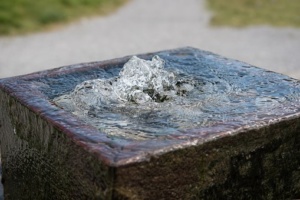Although there are hundreds of different water well drilling available nowadays as well as their uses, they are usually consist of almost the same parts. Read on and find out more.
General information
The Flute
 The grooves spiraling beneath the flutes of the well which act as channels for material ejection. As the well penetrates deeper, the excess material is forced out through the flutes as the hole is drilled. The bigger the flute, the faster a well can expel material.
The grooves spiraling beneath the flutes of the well which act as channels for material ejection. As the well penetrates deeper, the excess material is forced out through the flutes as the hole is drilled. The bigger the flute, the faster a well can expel material.
The Spiral
The spiral of the well is made up of its lips and flutes and refers to the rate of twist within the working half of the well. This, as aforementioned, controls the rate of material removal while drilling and the quality of the subsequent hole.
The Shank
Lastly, is the well shank. This is the piece of the well that fits into your drill chuck. The shank is probably the most boring part of a drill well. It is, however, no less important to your drilling performance. It is mostly smooth and roundish and may also contain design features.
MEASUREMENT
If you’ll remember from geometry, the diameter is the length of one end of a circle to the other. In other words, if you were to cut a hamburger in half, the length of the flat side of your now half hamburger would be its diameter.
Shank Diameter and Bit Diameter
So, the shank diameter is simply the measurement of the end of the shank. Your well diameter, then, is the measurement of the opposite end of the drill well- the less boring part, the tip.
Flute Length and Overall Length
The flute length is the length of the working half of the bit which excludes the shank. The overall length, then, refers to the length of the entire piece – shank and flute included.
Rate of Spiral
 The rate of spiral refers to the width of the lips and flutes, or, the amount of vertical space the flute takes up between each lip and the lip takes up between each flute. This may also include the depth of a well.
The rate of spiral refers to the width of the lips and flutes, or, the amount of vertical space the flute takes up between each lip and the lip takes up between each flute. This may also include the depth of a well.
Of course, there are much more types of measurement that are specific to the design of more complicated well – but, for the sake of basics, this provides a general groundwork that can be built upon as your experience grows.
